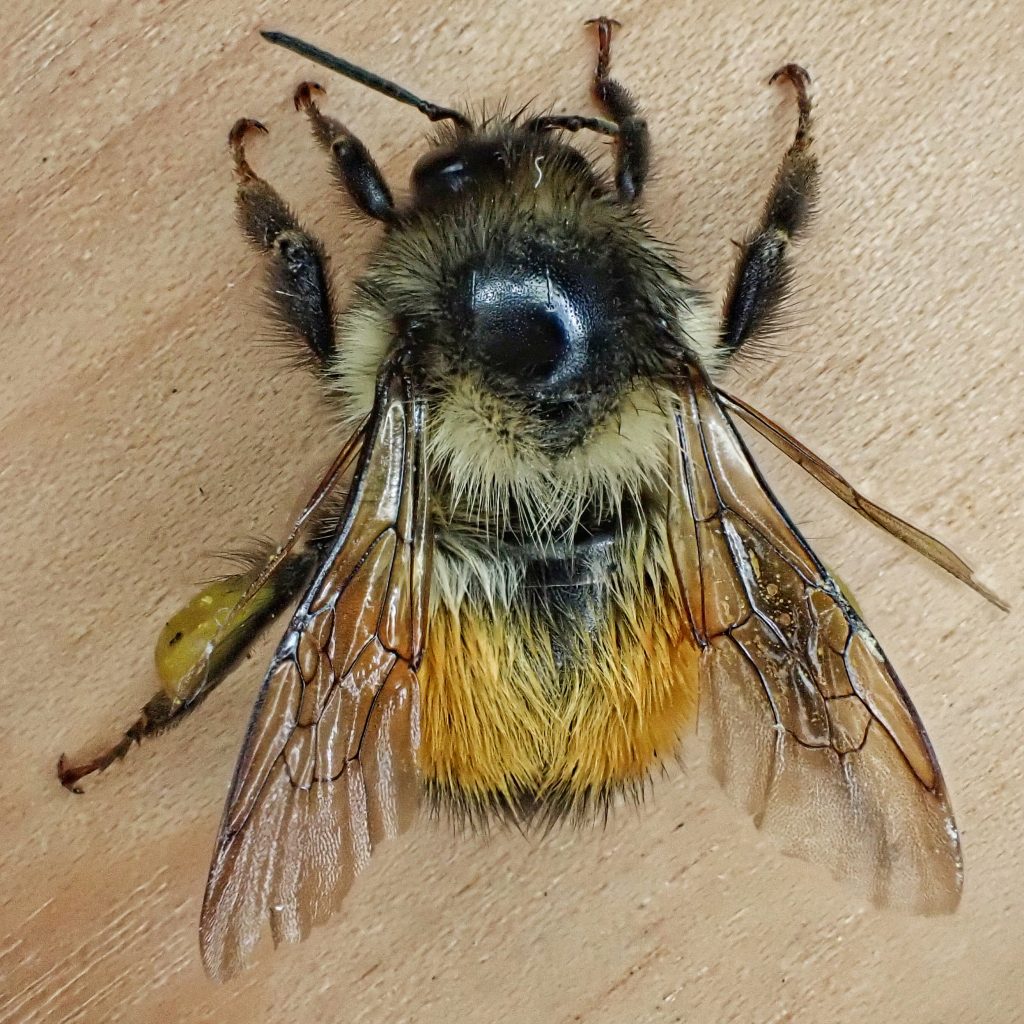
Please allow me to start off with a bit of pedantry. Bumble bee is two words, because they are, in fact, bees. To take some examples from other insect orders, you have horse flies, blow flies and robber flies, all of which are flies in the order Diptera. And you have sawflies (Hymenoptera), dragonflies (Odonata), and butterflies (Lepidoptera), which are not flies, and are one word. This came to irritate me greatly as I researched this post because I saw the word ‘bumblebee’ several times, even from sources that should know better (as I’m typing this my predictive text keeps trying to make it one word, ‘$%¥*>#%{‘), so thank you for allowing me to vent.
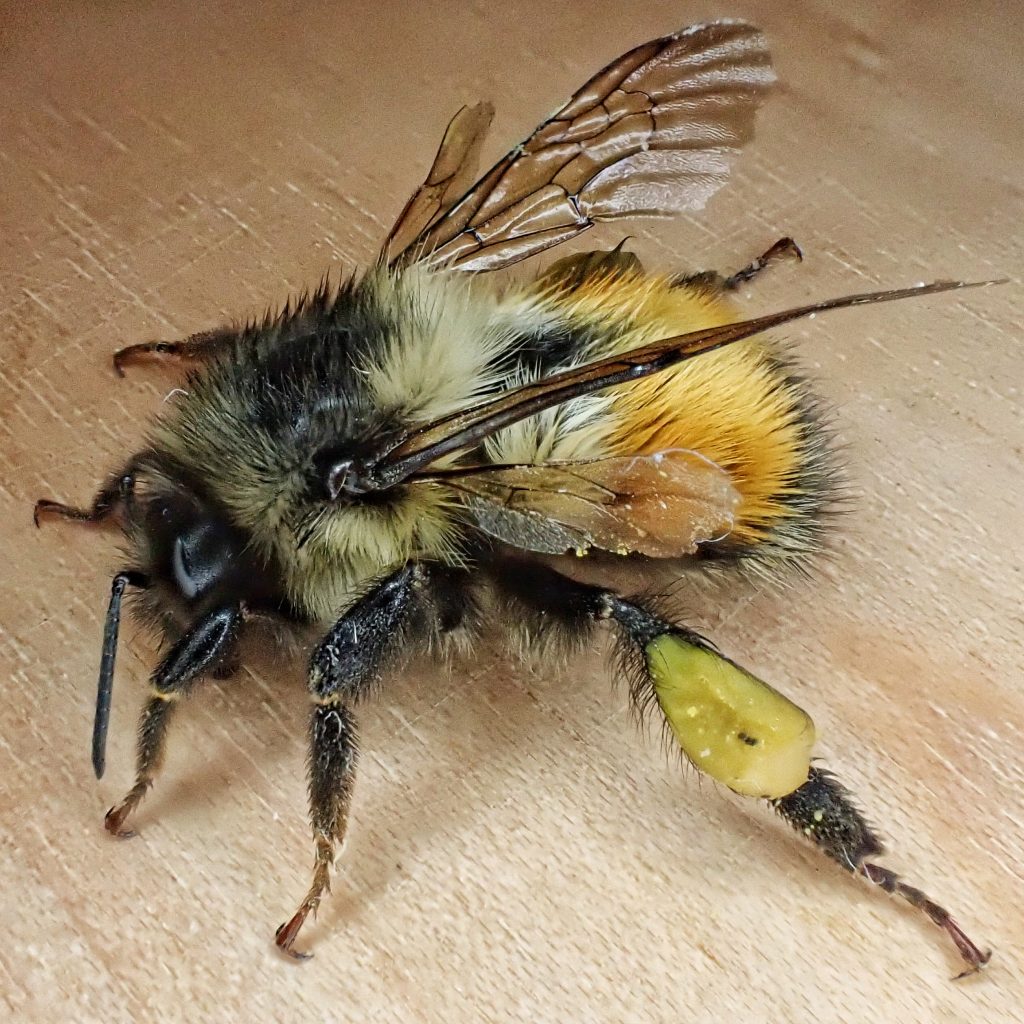
So, what’s not to love about bumble bees? They are critical pollinators, tireless in their efforts, and they are beautiful to look at. They are not aggressive, and seldom sting unless their nest is threatened, or they are trapped. They are large and easy to spot, and easy to watch if you don’t crowd them. In fact, from the viewpoint of a recreational naturalist they have only two closely related flaws; they hardly ever quit moving, so it can be very difficult to get decent photos of them, and the photos one can get seldom show the little details necessary for positive identification. So they must be captured.
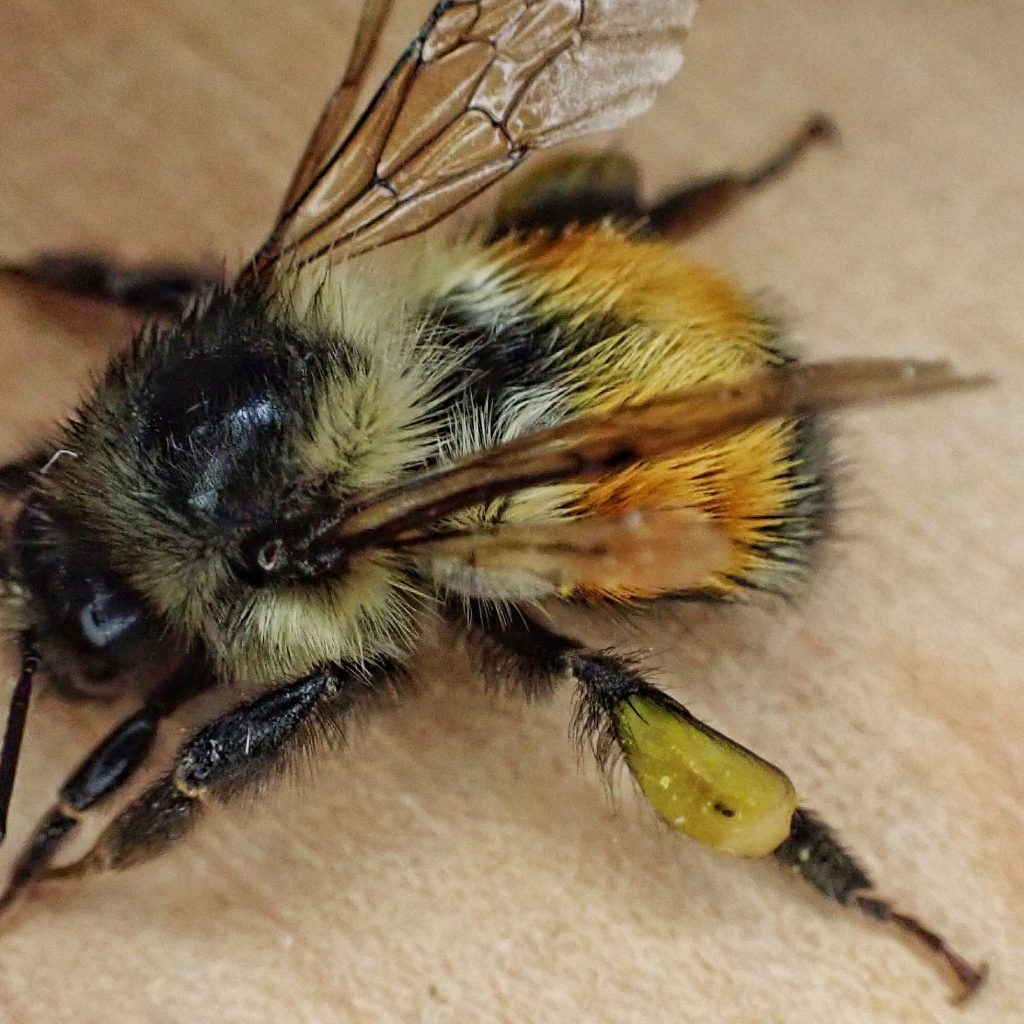
I’m not a fan of killing native bees. I tell myself that it’s for the good cause of education, that their days are numbered, that one person with a spray pack will kill more bees in an hour than I will in a lifetime, but my unwillingness to do so is why this is only the 2nd bumble bee I’ve identified. However I really wanted to know what species this was, and the battery on my camera was dead, so I collected it.
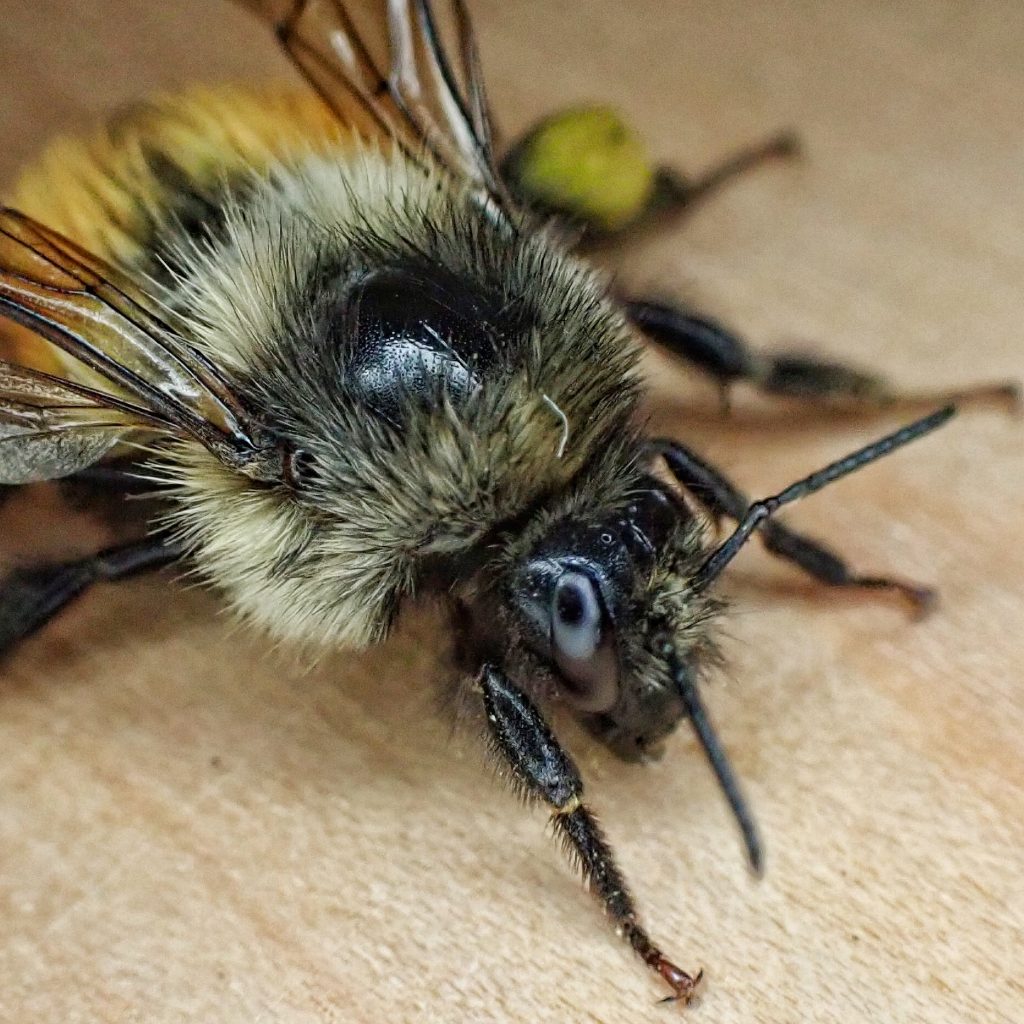
After a bit of refrigeration the bee was so ‘chilled out’ that I managed to get photos that showed clearly what was the prime diagnostic trait of ‘cloudy anterior to dorsal thorax (scutum)’. However I could not clearly see the cheek or the middle leg, which are the first two leads in the key I was using, so I didn’t know that ‘cloudy scutum’ was a defining characteristic, and the bee now resides in my small insect collection, along with the other casualties of identification. But because of what I learned from the pinned specimen of this Bombus melanopygus worker bee, I can now positively identify members of this species, without taking their lives.
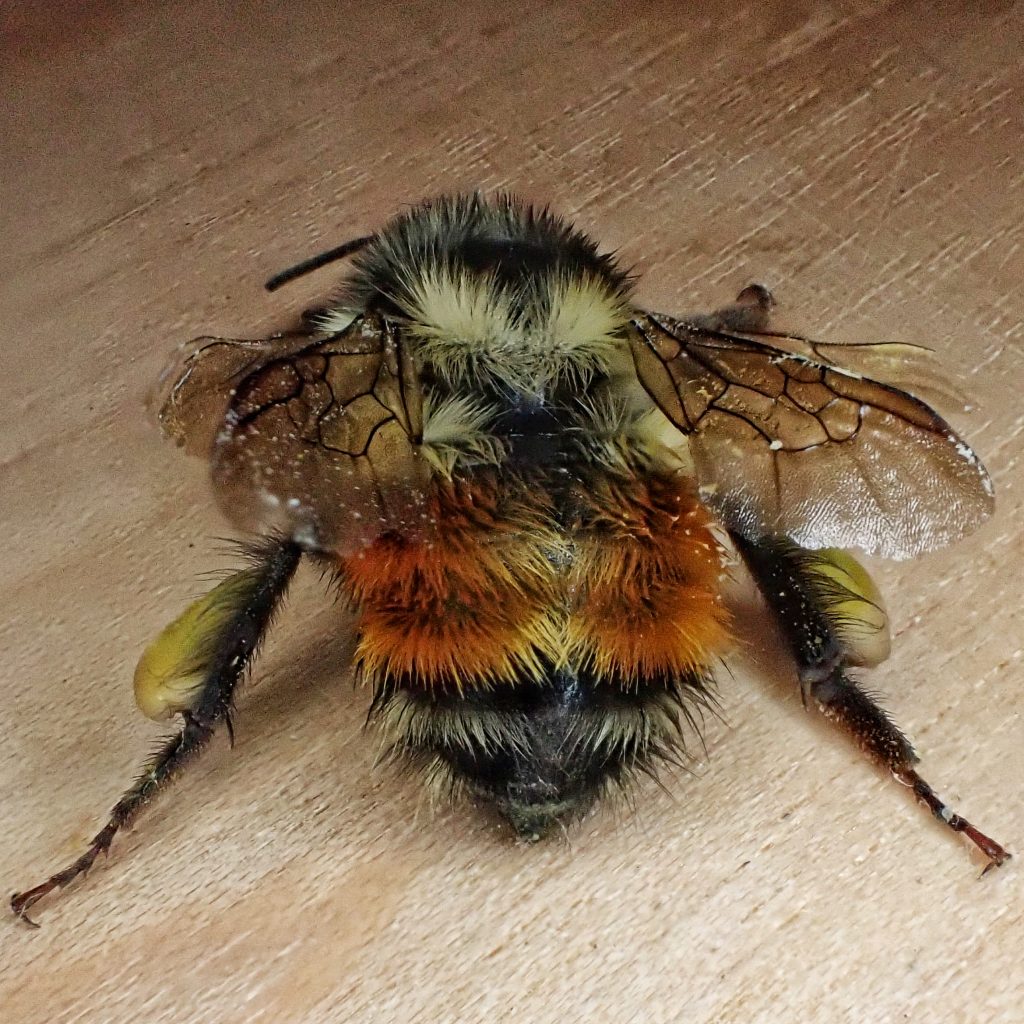
Description-Relatively small (queens 16-19mm; workers 10-16mm) for a bumble bee, with yellow and black scutum, and yellow and orange and black abdomen; cheek (oculo-malar area) as long as broad; the front 1/3 of the scutum, and most of the face, an even mixture of yellow and black hairs, giving it a ‘clouded’ look.
Similar species–Bombus sylvicola, B. huntii, B. bifarius, B. rufocinctus all have many more yellow than black hairs on the front of the scutum; other bumble bees in our region either lack orange on the abdomen or have a cheek much shorter than wide.
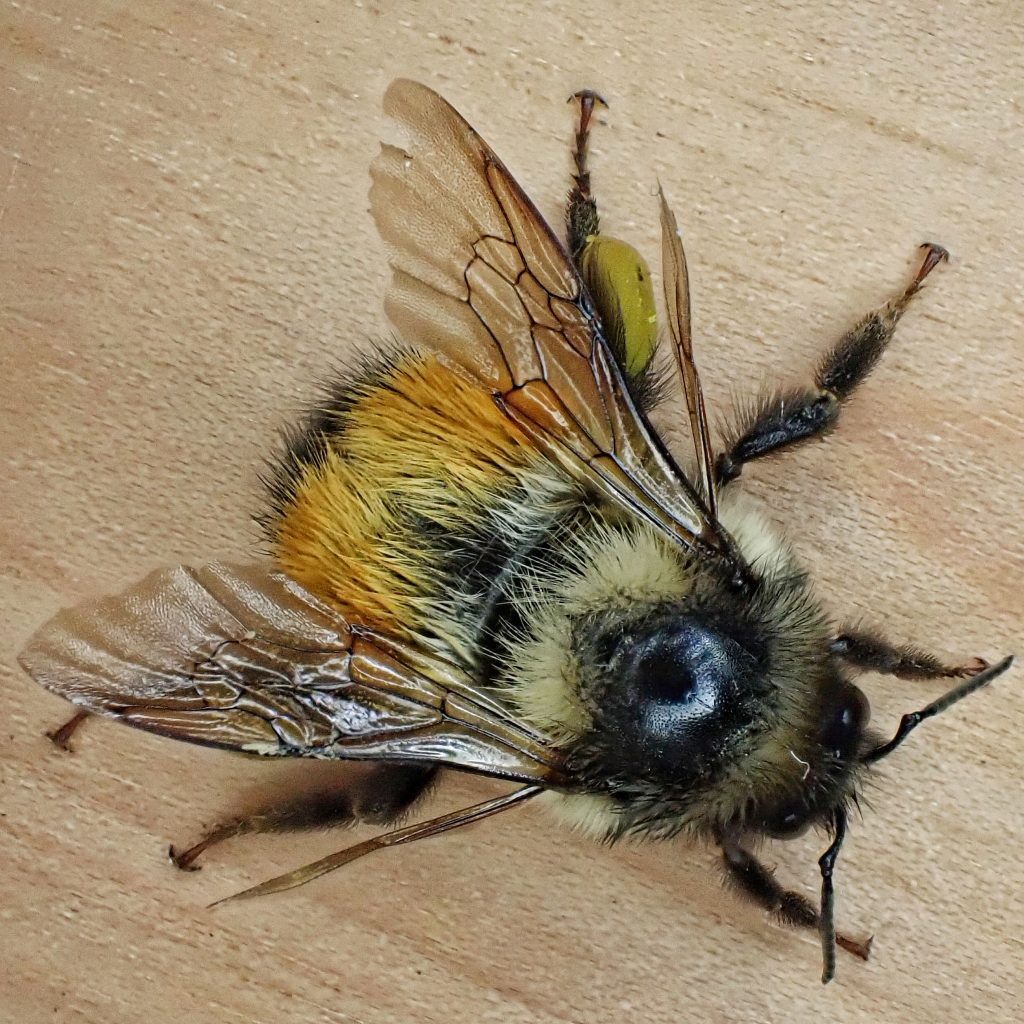
Habitat-Open, grassy areas such as meadows, parks, forest openings, up to 6,000’ elevation.
Range-Western North America; primarily west of the east slope of the Cascades in our region, as well as in and around the Rockies, Blues and Wallowas; absent from the most arid interior.
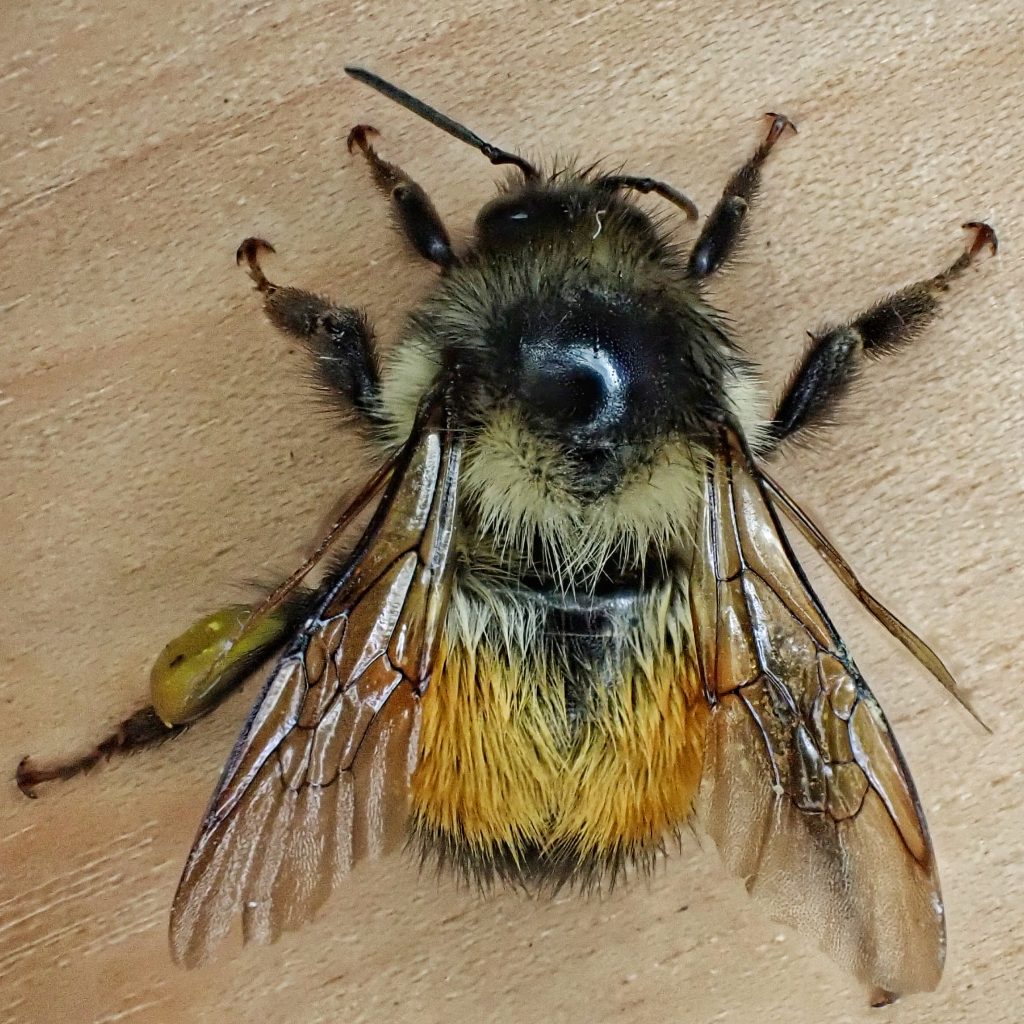
Eats-Pollen and nectar; feeds on flowers in the genera Eriophyllum, Senecio, Eriogonum, Lupinus, Arctostaphylos, Ceanothus, Salix, Penstemon, and many others.
Eaten by-Larvae of Syrphid flies in the genus Volucella feed on the larvae (as well as scavenging nectar and pollen), and the larvae of at least one sarcophagid fly parasitizes the larvae; some conopid flies lay eggs on the adults, and the resulting larvae then eat the bee from the inside out; robber flies and certain brave vertebrate insectivores prey on adult bumble bees.
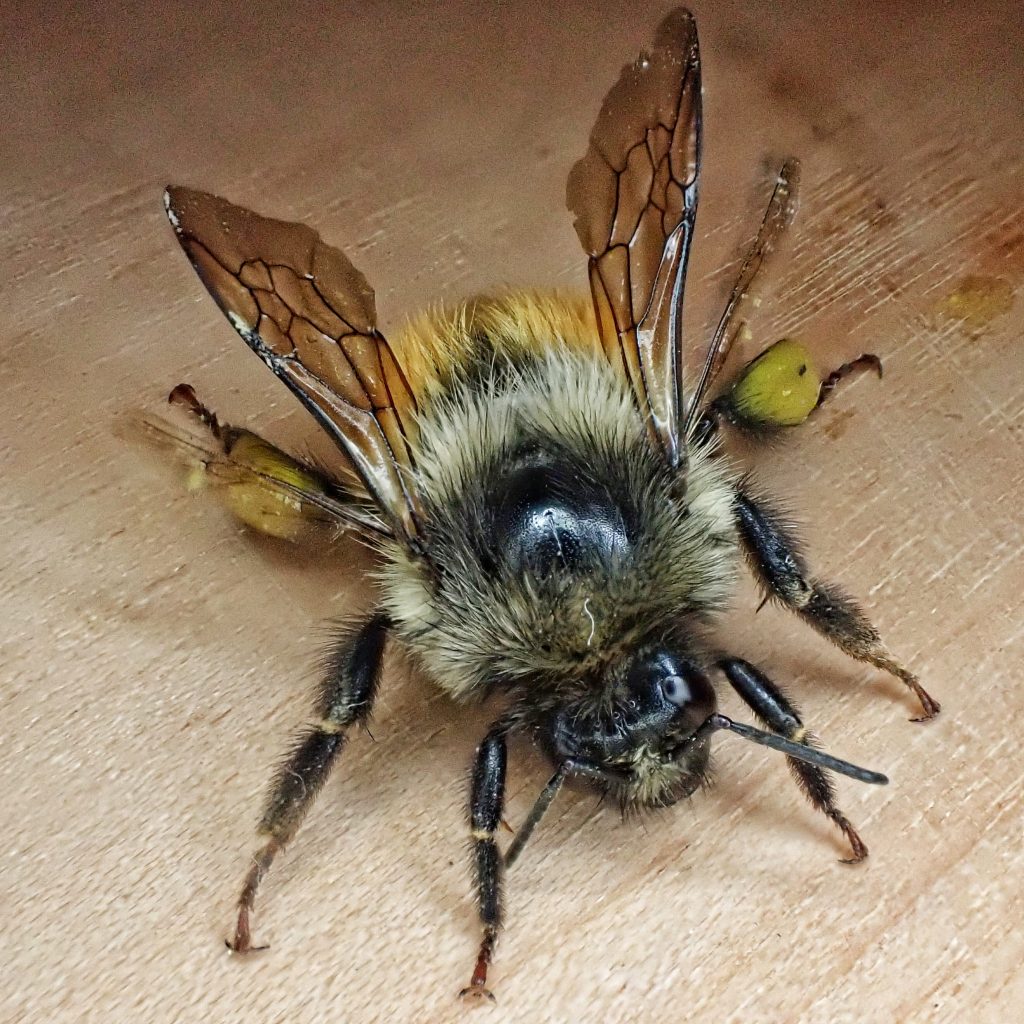
Reproduction-Nests in abandoned burrows underground, and above ground in tree cavities, bird nests, nest boxes, openings in buildings; one of the earliest bumble bees in our region to start nesting and producing males; males patrol looking for a mate; for an overview of general Bombus reproduction see the profile of Bombus vosnesenskii.
Adults active-Queens are out from early March to early September; workers fly from late March into October; males are seen from May through August; the bulk of the workers and males are seen from mid May to the end of July.
Etymology of names–Bombus is from the ancient Greek for ‘buzzing or humming’. The specific epithet melanopygus is from the Greek for ‘black rump’, for the mostly black terminal sections of the abdomen (tergites). This is also where the common name comes from.
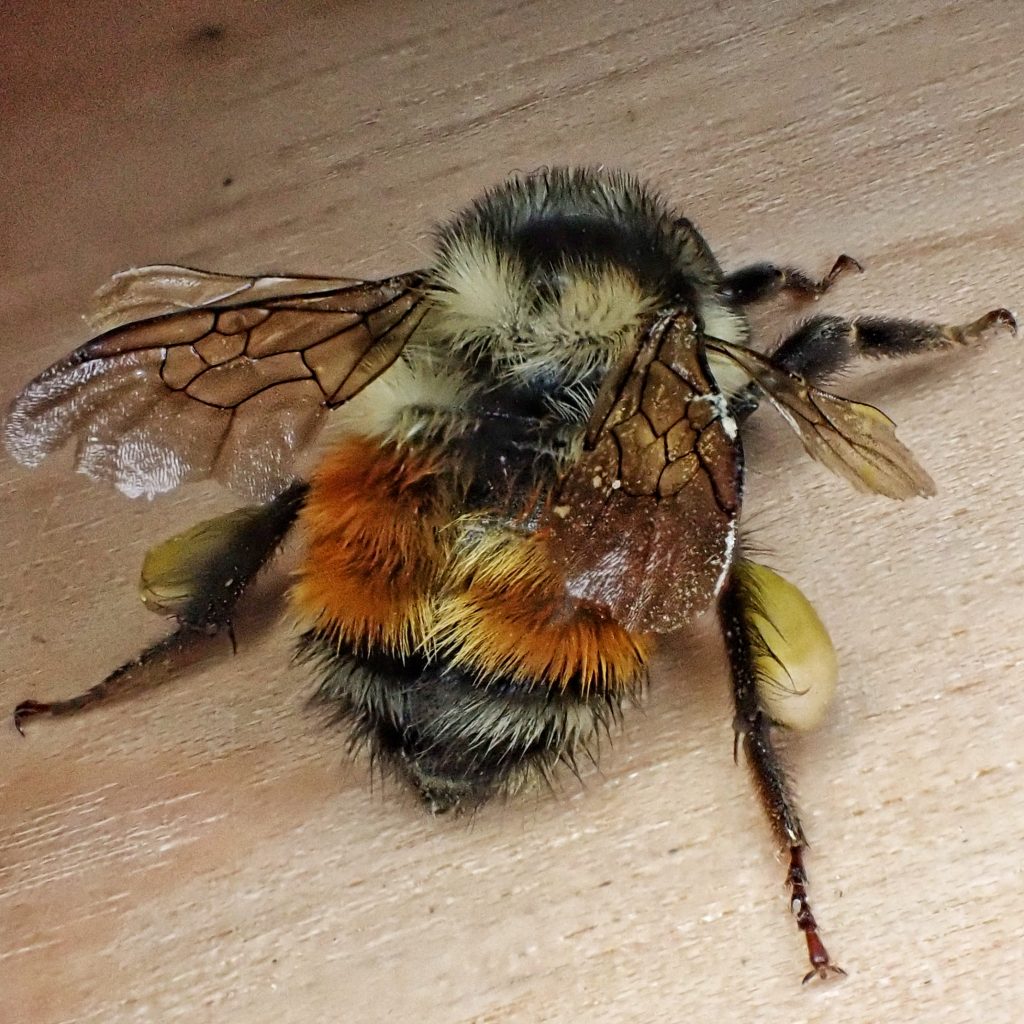
https://www.discoverlife.org/20/q?search=Bombus+melanopygus
http://fieldguide.mt.gov/speciesDetail.aspx?elcode=IIHYM24150
https://bugguide.net/node/view/15019
https://www.fs.fed.us/wildflowers/pollinators/documents/BumbleBeeGuideWestern2012.pdf
Bombus vosnesenskii (Yellow-faced Bumble Bee) – 10,000 Things of the Pacific Northwest
I love reading about the birds & the bees. Should of when I was younger, but I would like to say Thank you, I loved learning some thing new today.
Beekeeper is one word, though, just to keep things interesting and more difficult to remember, LOL!
Really enjoyed this profile & an up close view of a bumble bee, as I usually try to keep my distance! 😏👍
I’ve known about this naming rule for a long time and have caught the occasional error with other insect orders, families, and common names. However, I think I’ve overlooked this error. It could be because Bumblebee is used so often I’ve (subconsciously) accepted it as a correct option.
I was just surprised and then somewhat shocked by how often I saw it in scientific papers!
It’s in the dictionary, sooo…I guess it’s correct unless you’re a biologist. 😉
Yet another indicator of the imprecision of common names!
-Thanks, Dan Nelson for the careful explanation. Like you, after I once made an insect collection for my Roald Amundsen HS in Chicago, I never kill an insect. Question: Do these type of bumble bees only store enough pollen for their own generation of bees? What is the life span of a queen bumble, male bee and worker bee?
Thanks for your appreciation, Inge! As far as I can tell they only store enough food for their generation. Queens live about a year, males and workers live 2-3 months.